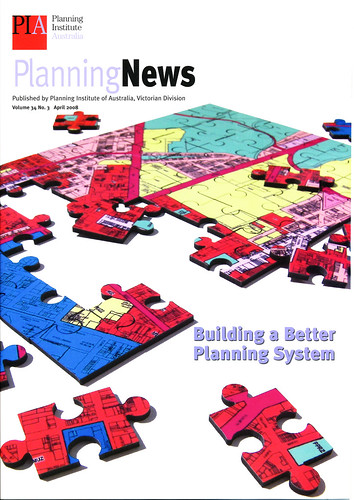
This article originally appeared under a joint by-line with Tim Westcott and Gilda Di Vincenzo in Planning News 34, no. 3 (April 2008): 8-13. I was the lead author but incorporated some material from my co-editors.
Back in December last year, after the release of the poor results on the PIA planning report card, we noted that such a negative self-assessment was not a luxury that the planning profession could afford. We argued that in order to justify our continued existence, planners need to make sure that the planning system dramatically improves. We argued that such improvement needed to achieve two broad objectives:
- The system has to be able to deliver better outcomes; and
- It has to do so while imposing less burden on the community.
The following discussion outlines some of the ways that might be achieved. It is based on suggestions garnered from our calls for contributions over recent months, our own experiences, and countless informal discussions with frustrated colleagues over the years. What follows is by no means definitive: it is hoped that by collating some of these ideas (many of which are familiar old chestnuts) in one place, we can prompt both further discussion and an increased sense of purpose and urgency in the move for planning system reform.